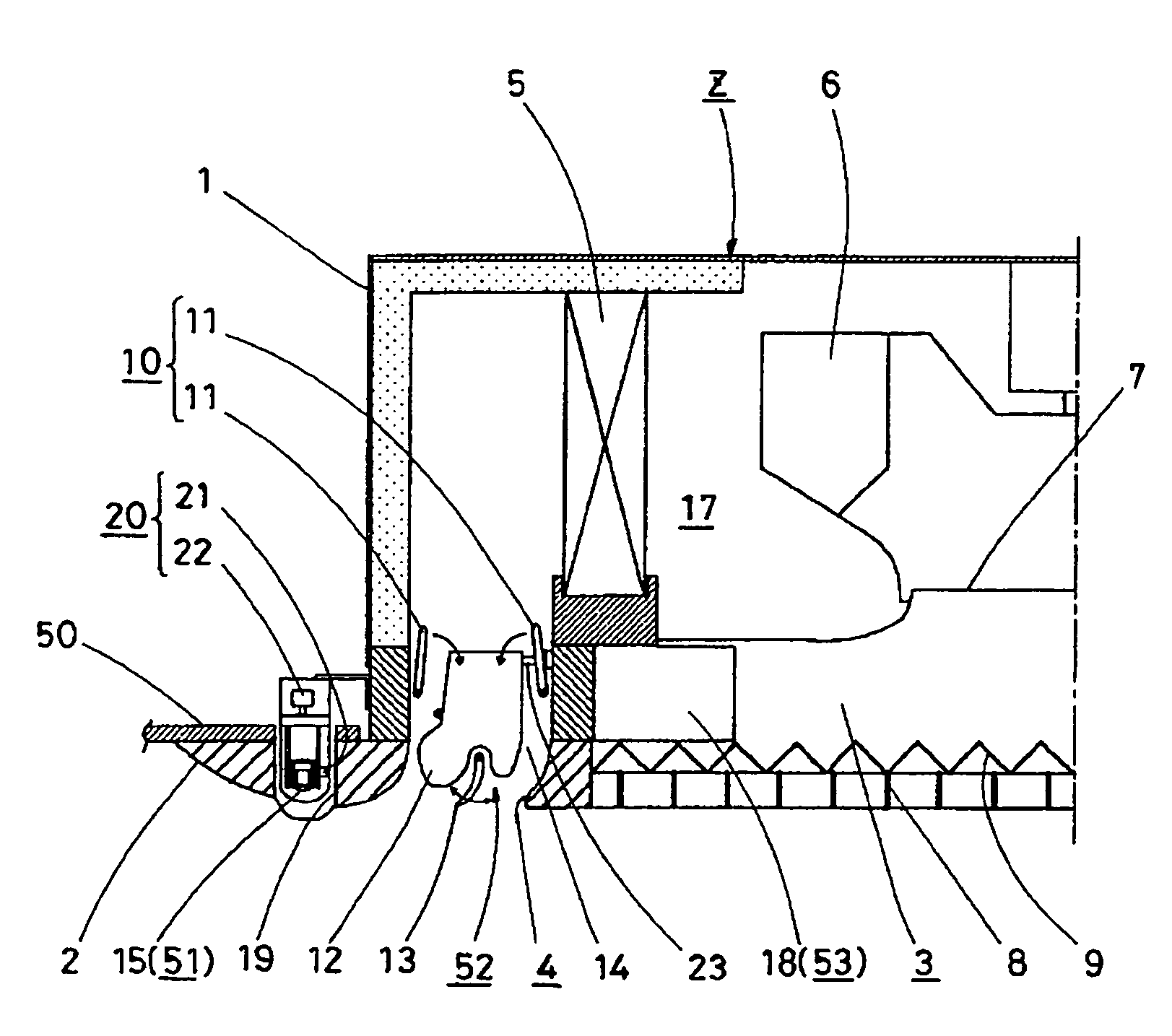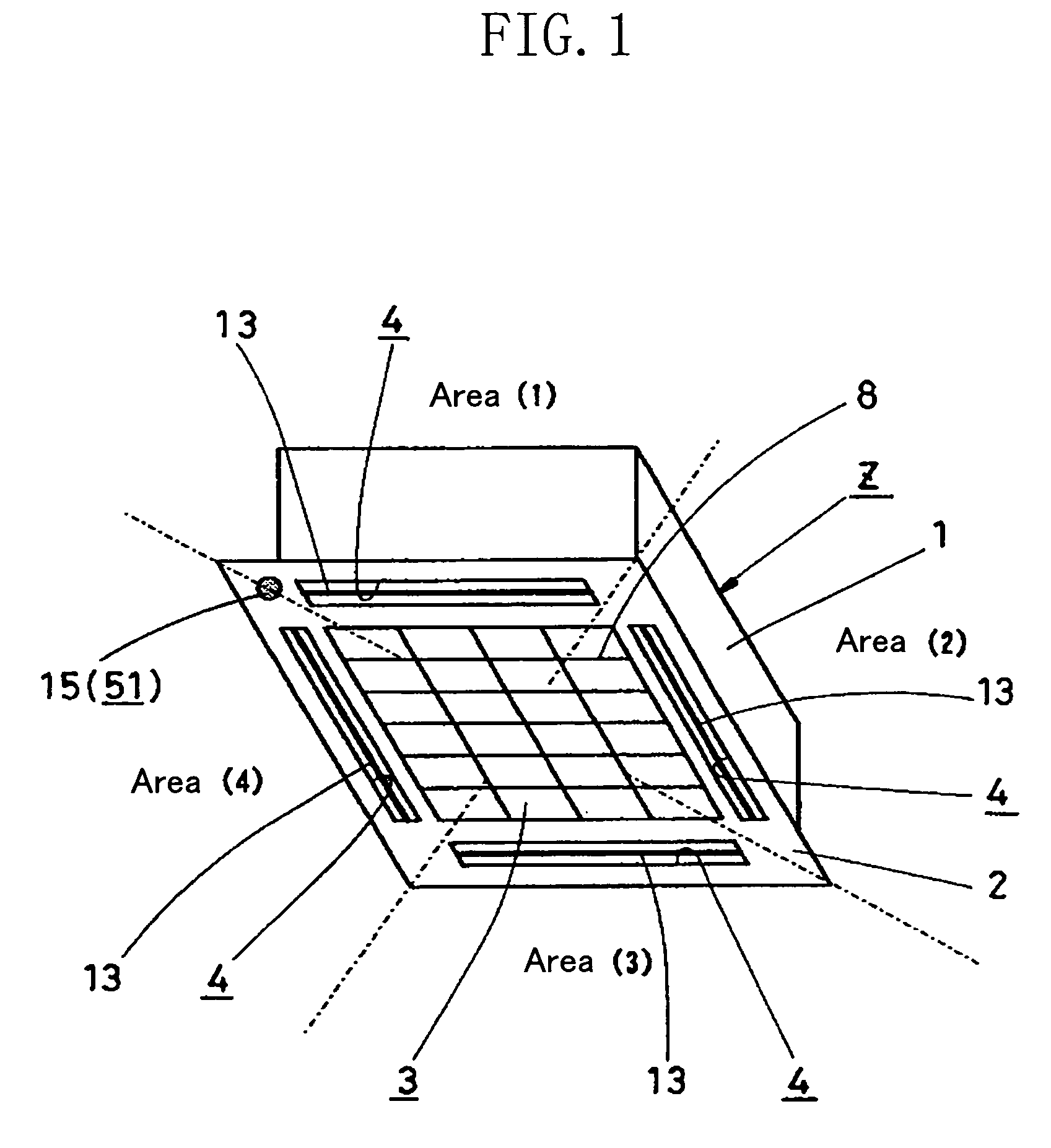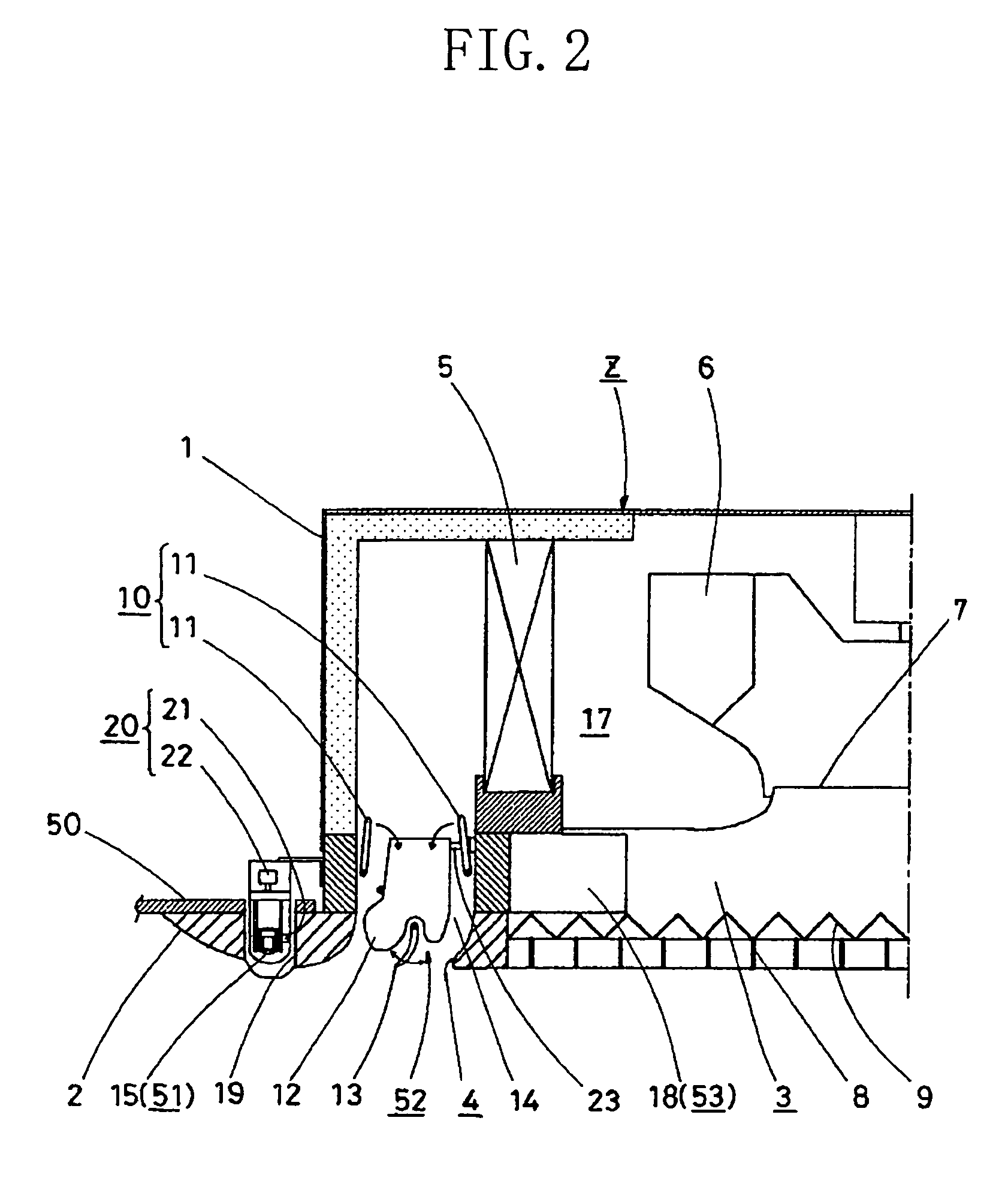Air conditioner
a technology for air conditioners and air filters, applied in the field of air conditioners, can solve the problems of inapplicability or unrealistic technical disclosures, impaired energy conservation, and inability to implement or realistically disclose them, and achieve the effects of reducing noise, reducing draft resistance, and reducing the quantity of air discharg
- Summary
- Abstract
- Description
- Claims
- Application Information
AI Technical Summary
Benefits of technology
Problems solved by technology
Method used
Image
Examples
first embodiment
[0098]I: First Embodiment of Air Conditioning Apparatus
[0099]FIGS. 1 and 2 show an indoor unit Z of a separate type air conditioning apparatus as the first embodiment of an air conditioning apparatus according the present invention. The indoor unit Z is a ceiling-embedded type indoor unit embedded in a ceiling 50 above the inside of a room, and has a basic structure similar to a conventionally known one. Specifically, the indoor unit Z includes: a rectangular boxlike casing 1 embedded in the ceiling 50 so that the casing 1 is located above the ceiling 50; and a rectangular flat-shaped indoor panel 2 that is placed at an opening of a lower end of the casing 1 from the inside of the room. The indoor panel 2 is provided at its center with an inlet 3 formed by a rectangular opening. Provided outwardly of the inlet 3 are four outlets 4, 4, . . . that are formed by elongated rectangular openings so as to rectangularly surround the inlet 3, and that are each extended substantially parallel...
second embodiment
[0131]How the controller 18 carries out control will be described in summary by providing several exemplary controls, subsequent to the following description made about an air conditioning apparatus.
[0132]II: Second Embodiment of Air Conditioning Apparatus
[0133]FIGS. 3 and 4 show an indoor unit Z of a separate type air conditioning apparatus as the second embodiment of an air conditioning apparatus according to the present invention. This indoor unit Z is similar in basic configuration to the indoor unit Z according to the first embodiment, and is different from the indoor unit Z according to the first embodiment in that the indoor unit Z of the present embodiment is provided with not only the infrared sensor 15 but also an after-mentioned temperature and humidity sensor 16 as the detection means 51, since the indoor unit Z of the first embodiment is provided with only the infrared sensor 15 as the detection means 51.
[0134]Therefore, only the configuration of the temperature and hum...
PUM
 Login to View More
Login to View More Abstract
Description
Claims
Application Information
 Login to View More
Login to View More - R&D
- Intellectual Property
- Life Sciences
- Materials
- Tech Scout
- Unparalleled Data Quality
- Higher Quality Content
- 60% Fewer Hallucinations
Browse by: Latest US Patents, China's latest patents, Technical Efficacy Thesaurus, Application Domain, Technology Topic, Popular Technical Reports.
© 2025 PatSnap. All rights reserved.Legal|Privacy policy|Modern Slavery Act Transparency Statement|Sitemap|About US| Contact US: help@patsnap.com



